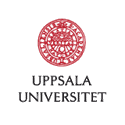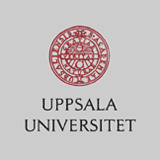Data visualization for life science, 1.5 hp
| Kursnummer | NN |
| År | 2021 |
| Typ | Methodcourse |
| Spår | Cancer, Cardiovascular diseases, Drug development, Infection, Inflammation, Metabolism, Muscoloskeletal system, Neuroscience, Reproduction and development, |
| Max antal deltagare | 32 |
| Sista ansökningsdag | 2021-11-15 |
| Språk | Sven |
| Kursansvarig | Alenka Guček |
| Institution | Department of Medical Cell Biology |
| Besöksadress | Husargatan 3, Uppsala |
| Postadress | Box 571, 751 23 UPPSALA |
| Datum | 29.11, 30.11, 1.12, 6.12, 7.12 |
| Lokal | online |
| Kurslängd | 1 full week |
| Kursrapport | |
| Kursplan |
Beskrivning
Due to enormous technical advancement in life science field in the last couple of years new ways how to visualize the large quantity of data in a meaningful and clear way are being developed. Not only bioinformatics, but also life science researchers will need to be equipped with tools and competences to communicate their work to both peers through effective scientific visuals and to society in general.
The course is aimed primarily at PhD students with at least some experience in making scientific figures but is also open to postdocs and researchers who would like to understand and learn more about data visualization in scientific research.
The aim of this course is to educate next generations of life science researchers how to visualize the research data in a better way and develop a healthy level of criticism and data literacy.
Inlärningsmål
Intended learning outcomes for students are to acquire skills and tools to visualize their data in a way that their research is understandable to others; to develop data literacy and critical thinking while studying published literature; and to demonstrate reflection on best practices in life science dataviz.
Innehåll
Course is a combination of lectures, workshops, individual and group work. Lectures will cover the core concepts of the data visualization, chart types, perception and data abstraction, graphical components and use of colors in data visualization, best data visualization practices from bioinformatics, how not to mislead with charts, and multivariate data visualization. Workshops will cover the practical instructions on how to preprocess and visualize the data with open source tools such as Python and R (no programming background is required) and allow students to develop a critical eye by bringing real-life examples of scientific figures and discussing what works and what doesn’t. For the individual assignment, students will develop a visualization for the COVID-19 Data & Code Reuse Competition ran by the Covid19dataportal.se. For the group assignment, students will put the acquired knowledge to practice by preparing visualizations for different types of audience (publication, presentation or SciComm). Students can work on their own data or we provide it.
Undervisning
Lectures and workshops will be held online. Students will receive the instructions for the individual and the group work assignment when the course begins.
Examination
Student knowledge will be assessed by their assignments: short presentation of visualizations for both individual and group work, the active feedback that they will provide to fellow students and active participation on the workshops.
Litteratur
Fundamentals of Data Visualization, Claus O. Wilke [https://clauswilke.com/dataviz/]
Lärare
Alenka Guček, MCB, UU and AI-lab, JSI
Anders Has, IT, UU
Raphaela Heil, IT, UU
Liane Hughes, data visualization at Scilifelab
Kahin Akram, PhD in information visualization from Linköping University
and other invited speakers
Kontakt
Alenka Gucek
Department of Medical Cell Biology
BMC
alenka.gucek@mcb.uu.se


